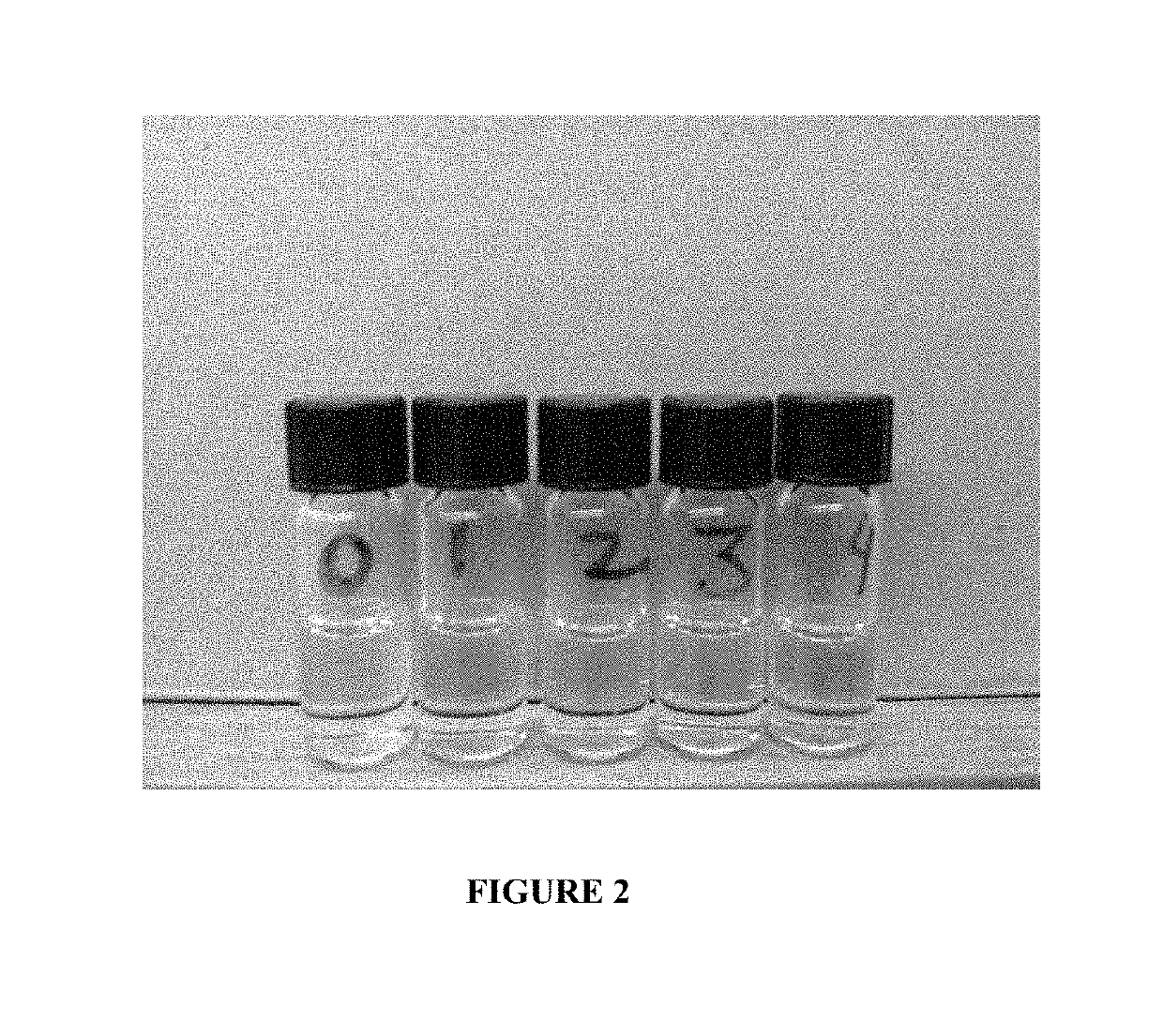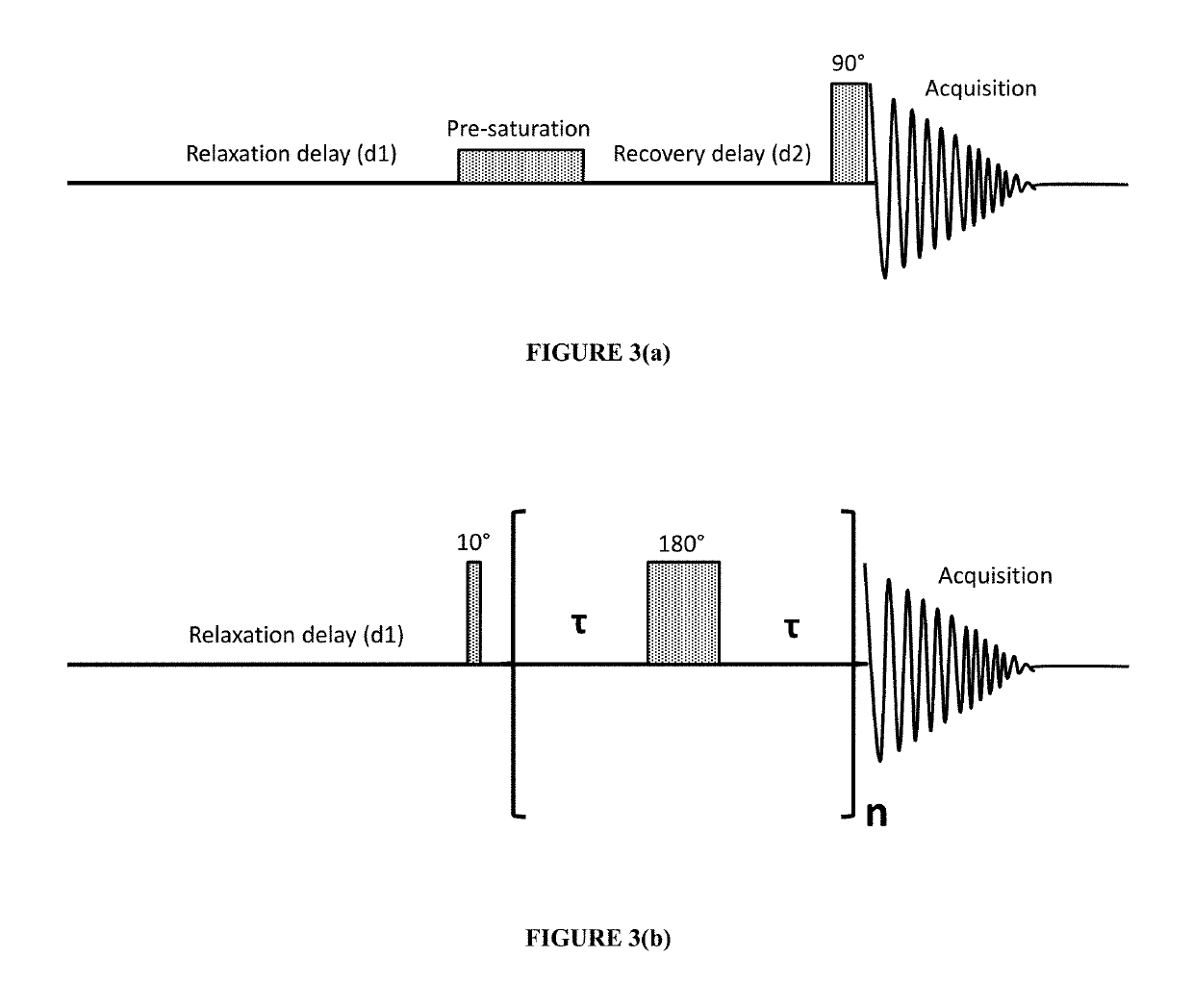Assessing biopharmaceutical aggregation using magnetic resonance relaxometry
a biopharmaceutical and relaxometry technology, applied in the direction of nuclear magnetic resonance analysis, measurement using nmr, instruments, etc., can solve the problems of only being detected by scientific instruments, aggregation is a significant problem, and the monitoring of aggregation is time-consuming and complex process
- Summary
- Abstract
- Description
- Claims
- Application Information
AI Technical Summary
Benefits of technology
Problems solved by technology
Method used
Image
Examples
example 1
[0049]Solutions of bovine serum albumin (BSA) in phosphate buffered saline (PBS) were used as a model system for protein-based pharmaceuticals. BSA is readily commercially available and is also widely used in many medical applications [6]. The NMR relaxivities of water (R1 and R2) were measured in freshly prepared protein solutions and in the solutions with a controlled degree of protein aggregation. To mimic protein aggregation in biopharmaceutical products, a heat-induced aggregation method was used [7]. The slow aggregation process in model systems that occurs during prolonged standing at room temperature was also evaluated.
[0050]Analytical grade reagents for buffer preparation, solvents and bovine serum albumin (BSA, lyophilized, 98% purity, molecular weight 66 kDa) were purchased from Sigma Aldrich Inc., St. Louis, Mo., and were used without further purification. All solutions were prepared in phosphate buffered saline (PBS) containing 50 mM sodium phosphate and 100 mM sodium c...
example 2
[0063]The initial concentration of all proteins in Example 2 for the study of heat-induced aggregation was 15 mg / mL which for BSA corresponds to 0.2 mM, and for γ-globulin corresponds to 0.1 mM. As in the Example 1, all solutions were prepared in PBS buffer at pH 7.4. Bovine serum albumin (BSA, lyophilized, 98% purity, molecular weight 66 kDa) and γ-globulin (from human blood, >99% purity, molecular weight 150 kDa) were purchased from Sigma Aldrich Inc., St. Louis, Mo., and were used without further purification. The temperatures used to induce aggregation were 55° C. (square, in FIGS. 6 and 7) and 60° C. (circle, in FIGS. 6 and 7) and exposure times at these temperatures varied from 2 minutes to 30 minutes (2, 5, 10, 15, 20, 25, and 30 minutes at each temperature). Different exposure times were used to attain different degrees of aggregation. The percentage of the aggregation was determined by SEC using the BioLogic DuoFlow® FPLC (Bio-Rad Laboratories, Hercules, Calif.) with UV-det...
example 3
[0065]As introduced hereinabove, the present inventors surprisingly discovered that the transverse relaxation rate constant of water R2 is very sensitive toward a variety of conditions of a complex mixture. For example, compositions comprising 10 mg / mL BSA with varying amounts of γ-globulin and hydroxypropylcellulose (HPC) were prepared, wherein the percentage of BSA (10 mg / mL) was held constant at 33% while the combined percentage of γ-globulin and HPC are held constant at 67%. As in the Examples 1 and 2, all solutions were prepared in PBS buffer at pH 7.4. Bovine serum albumin (BSA, lyophilized, 98% purity, molecular weight 66 kDa) and γ-globulin (from human blood, >99% purity, molecular weight 150 kDa) were purchased from Sigma Aldrich Inc., St. Louis, Mo., and were used without further purification. The measurement of the transverse relaxation rate of water R2 was carried out as described hereinabove at 25° C.
[0066]The results are shown in FIG. 8, where it can be seen that the t...
PUM
| Property | Measurement | Unit |
|---|---|---|
| temperature | aaaaa | aaaaa |
| molecular weight | aaaaa | aaaaa |
| size- | aaaaa | aaaaa |
Abstract
Description
Claims
Application Information
 Login to View More
Login to View More - R&D
- Intellectual Property
- Life Sciences
- Materials
- Tech Scout
- Unparalleled Data Quality
- Higher Quality Content
- 60% Fewer Hallucinations
Browse by: Latest US Patents, China's latest patents, Technical Efficacy Thesaurus, Application Domain, Technology Topic, Popular Technical Reports.
© 2025 PatSnap. All rights reserved.Legal|Privacy policy|Modern Slavery Act Transparency Statement|Sitemap|About US| Contact US: help@patsnap.com



